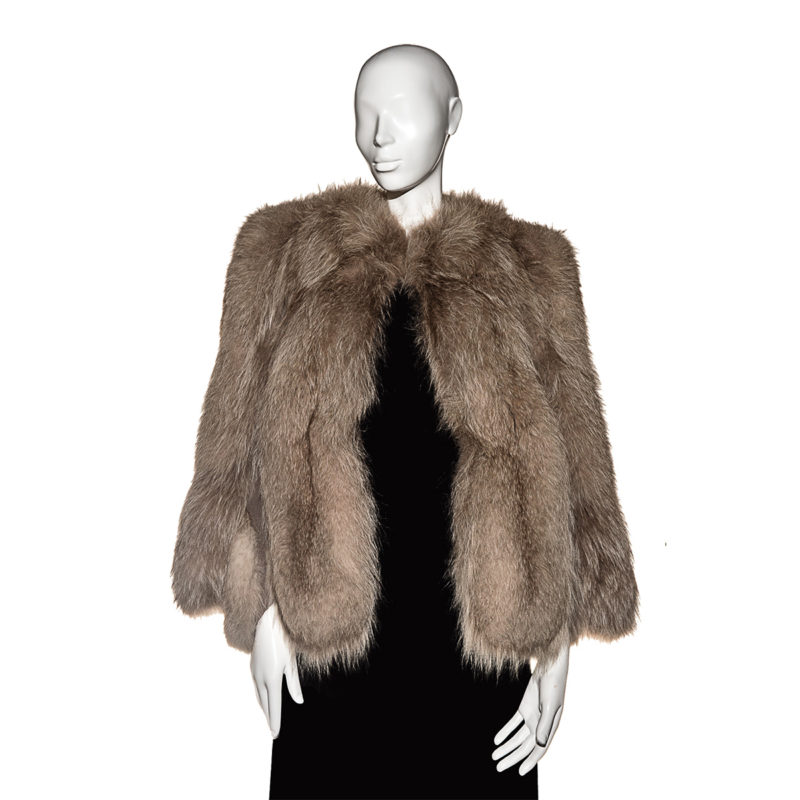In the early decades of the 20th century, it was fashionable to use fox fur on everything from scarfs, capes, and coats to trim for suits and gowns. Where once the most popular fur was beaver used for men’s hats, by the 20th century, fur tastes had shifted to women’s clothing.
Many farmers began raising foxes to meet the demand for furs. Raising foxes in captivity made it possible to produce much more fur than ever before and allowed farmers to carefully breed for color and texture, tailoring their herds to meet the ever-changing demands of fashion.
Anticipating a shift in tastes toward lighter colored furs, the Fromm Brothers of Hamburg, Wisconsin, began breeding silver foxes. Silver pelts actually ranged in color from black to white but the Fromms concentrated on the brightest silver pelts possible. Darker black-haired pelts had been the most sought-after furs in the 1910s and 1920s, leaving the Fromms, with their preference for the lightest colored silver foxes, in the minority at that time.
But fashions shifted to light silver in the 1930s and the Fromms were perfectly positioned to capitalize on the trend. Other breeders were caught off guard and had to shift their breeding to grow lighter pelts. The Fromms, with their ample supply of pelts, quickly became world-renowned for the quality and color of their furs.
In 1937, at the height of the Great Depression, the Fromm Brothers Company saw $10 million in business.
The Fromms made the most of their power and influence to reshape the industry. The brothers had long complained about the practice of holding fur auctions in centers of trade like Leipzig, London, Paris, St. Louis, and New York—places far from where furs were raised. Farmers also had no say or influence over prices once they shipped their harvest off on trains to the auctions. And so the Fromms decided to change things by inviting the fur buyers directly to their farm to bid on Fromm furs directly.
The auctions proved incredibly successful for several years. The buyers had direct access to the largest supply of silver foxes in the world, while the Fromms sold their entire stock at higher prices.
By the end of the 1930s, however, the novelty of the Fromms’ auction had worn off as competition increased and prices fell due to greater supply. The Fromms ended the Wausau auction and relocated their auction company to New York.
Learn more about the Fromm Fur Farm at Wisconsin 101.










